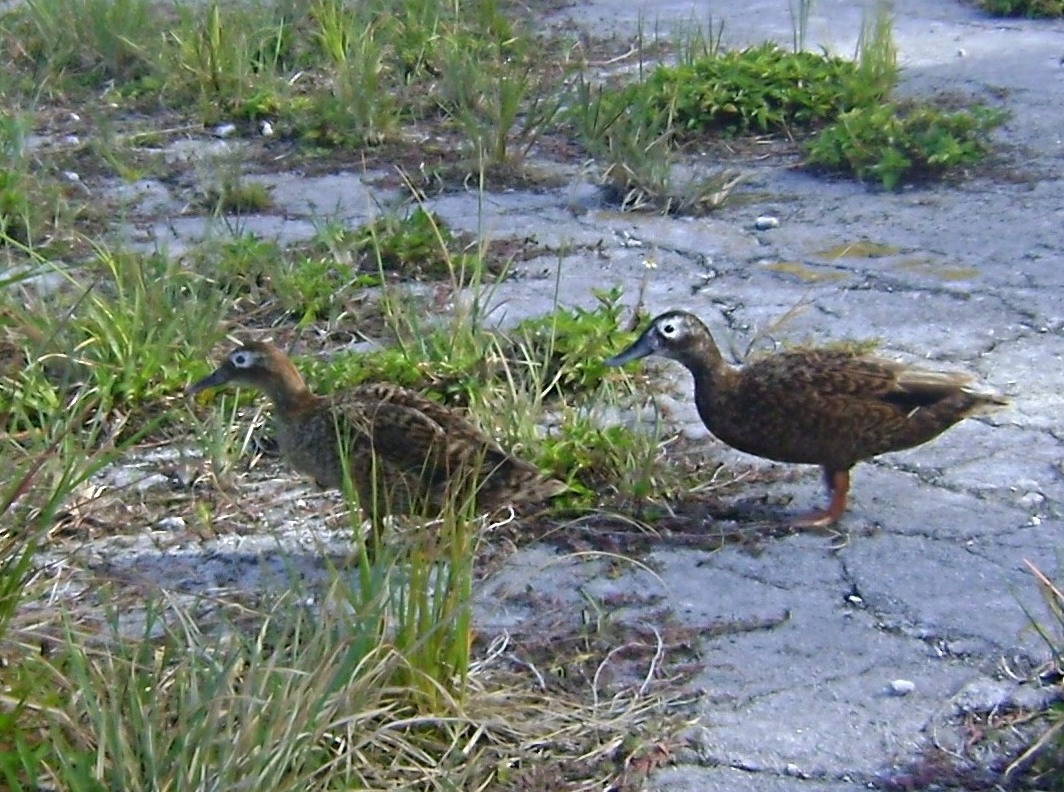Laysan Duck
A species of Anas Scientific name : Anas laysanensis Genus : Anas
Laysan Duck, A species of Anas
Botanical name: Anas laysanensis
Genus: Anas
Content
Description General Info
Description
The Laysan duck is teal-sized and dark brown, with a prominent white eye-ring. The bill is short and spatulate, dark green with variable black blotching in males, and dull orange with variable black blotching in females. The Laysan duck usually has a ring of fat around its neck. Some males show faint iridescence on the head or neck and have slightly upturned central tail feathers. The wing has an iridescent purplish-green patch (speculum feathers) in both sexes. Leucistism, or extensive white feathering, is common on the head and neck of older birds. The legs and feet are orange, usually brighter in the male. The annual pre-basic molt is complete, and the ducks lose all their flight feathers and become incapable of flight until new feathers grow in. Wild ducks have been known to live to the age of twelve years, and captive birds have lived to the age of eighteen. 
Size
38-43 cm (15-17 in)
Life Expectancy
12 years (wild), 18 years (captivity)
Nest Placement
Ground
Feeding Habits
Laysan Duck primarily consume macroinvertebrates. They forage by dabbling in shallow waters, often at dusk or night. Laysan Duck exhibit specialized feeding behaviors to exploit their island habitat's limited resources.
Habitat
Laysan Duck resides in northwestern Hawaiian coral atolls' remote coastal environments. Its prime habitat encompasses hypersaline lakes with fluctuating salinity, bordered by mudflats and dense algae growths. These lakes, along with surrounding grassland and shrub vegetation, form the essential landscape, providing food sources and nesting material not only for laysan Duck but for a variety of seabirds that enrich the habitat.
Dite type
Herbivorous
General Info
Feeding Habits
Bird food type
Behavior
The Laysan duck is a poor flyer, but walks and runs well, with a pelvic girdle adapted to terrestrial foraging. Its wings and wing muscles are reduced; it prefers to freeze in place when pursued. Energetic foraging behavior includes a fly-snapping sprint through Neoscatella sexnotata brine fly swarms. With necks outstretched, and bills close to the ground, the ducks run along a mudflat and as clouds of flies rise up in front, snap them up by rapidly opening and closing their bills. The ducks also will dabble and filter feed along lake shallows, shore, and in upland vegetation for macroinvertebrates, algae, leaves, and seeds. During the day, and especially in the breeding season, they prefer to hide among the grass and shrub vegetation, helping them to avoid avian predators such as frigatebirds. They prefer to venture out in the open and feed on the lake from dusk til dawn, although there seems to be marked variation from year to year according to the availability of food items. 
Species Status
CRITICALLY ENDANGERED. CITES I. Population estimated at 500–680 mature individuals.
